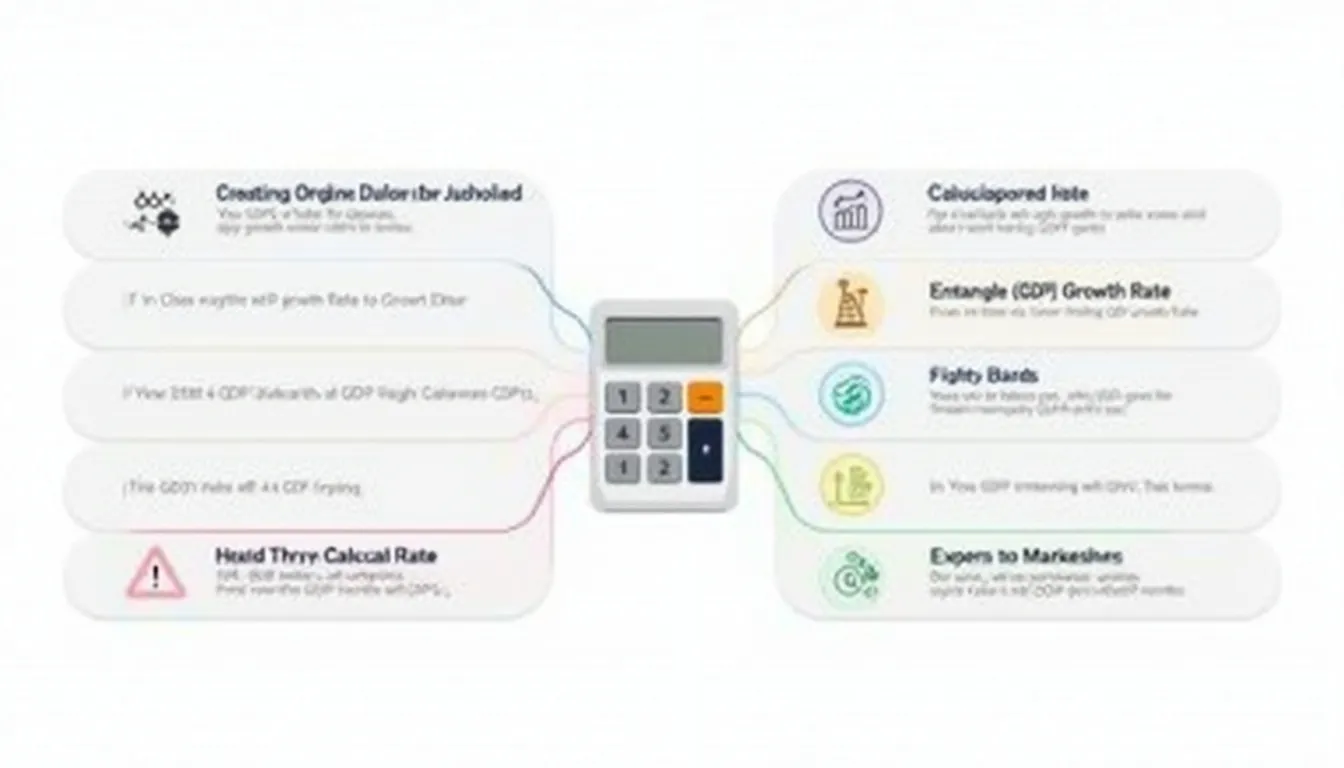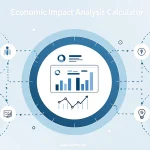GDP Growth Rate Calculator
Is this tool helpful?
How to use the tool
- Type current GDP. Example inputs: 25 750 000 000 000 or 3 456 789 012.45.
- Type previous GDP. Example inputs: 24 100 000 000 000 or 3 210 987 654.32.
- Press “Calculate.” Your growth rate appears instantly in percent.
- Interpret. Positive result = expansion; negative = contraction.
Formula behind the scenes
The calculator applies:
$$\text{Growth Rate}= rac{\text{Current GDP} – \text{Previous GDP}}{\text{Previous GDP}}\times100\%$$
Worked example A
- Current GDP = $25 750 000 000 000
- Previous GDP = $24 100 000 000 000
- $$ rac{25.75-24.10}{24.10}\times100=6.86\%$$
Worked example B
- Current GDP = $3 456 789 012.45
- Previous GDP = $3 210 987 654.32
- $$ rac{3.45678901245-3.21098765432}{3.21098765432}\times100=7.64\%$$
Quick-Facts
- Typical healthy growth for advanced economies: 2 – 3 % (IMF WEO, 2023).
- Global GDP grew 3.1 % in 2022 (World Bank, 2023).
- Recession = two consecutive quarters of negative growth (NBER, 2020).
- Real GDP removes inflation effects using chained-price indexes (BEA, 2023).
- Emerging markets often target 5 – 7 % growth (OECD Policy Paper, 2022).
FAQ
What is GDP?
GDP is the total market value of all goods and services produced within a country in a given period (OECD Glossary, 2023).
Why adjust for inflation?
Using real GDP isolates volume changes; price swings then do not distort growth readings (BEA, 2023).
Can I calculate quarterly growth?
Yes—enter two consecutive quarters; the formula remains identical.
What does negative growth signal?
A negative rate signals shrinking output and may herald recession if it persists (NBER, 2020).
Is 7 % growth sustainable?
In emerging economies, 7 % can be sustained while capital deepening continues (World Bank, 2022).
How accurate is this calculator?
Accuracy equals the precision of your GDP sources; formula itself is exact.
Can I compare countries?
Yes, but convert figures to one currency and equal time spans first (IMF Data Guide, 2023).
Who uses growth data?
Economists, investors, and policymakers track growth to set interest rates and allocate capital (IMF WEO, 2023).
Important Disclaimer
The calculations, results, and content provided by our tools are not guaranteed to be accurate, complete, or reliable. Users are responsible for verifying and interpreting the results. Our content and tools may contain errors, biases, or inconsistencies. Do not enter personal data, sensitive information, or personally identifiable information in our web forms or tools. Such data entry violates our terms of service and may result in unauthorized disclosure to third parties. We reserve the right to save inputs and outputs from our tools for the purposes of error debugging, bias identification, and performance improvement. External companies providing AI models used in our tools may also save and process data in accordance with their own policies. By using our tools, you consent to this data collection and processing. We reserve the right to limit the usage of our tools based on current usability factors.







